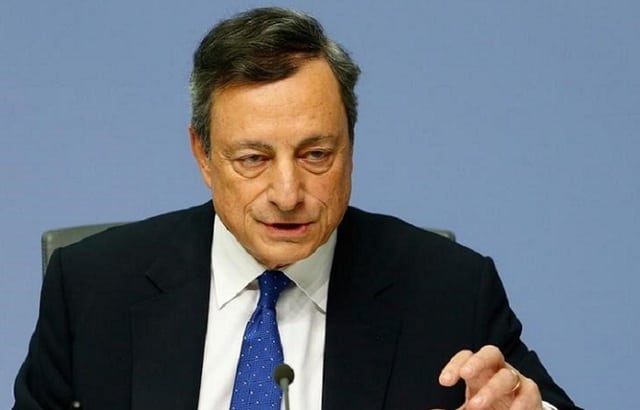Of all the developed markets, the eurozone has had the biggest recovery story this year, with better growth across the region and a strong corporate earnings season.
That said, Lyxor’s senior credit strategist Lionel Melin, does not think the ECB will divert from its dovish course for another year at least.
With the dovish ECB president Mario Draghi in charge until October 2019, investors should not anticipate a rate hike until 2019, he said.
In fact, Melin does not think it is inconceivable that the deposit rate will remain at -40bps and all other policy rates at 0% for well over a year.
And depending on the outcome of the Federal Reserve’s meeting this week, investors might also have to wait for more news on the ECB’s tapering timeline.
If the Federal Open Market Committee (FOMC) makes a move to reduce its bloated balance sheet on Wednesday, Melin thinks it is likely that the ECB will announce the end of its quantitative easing programme during its October session.
Likewise, if the Fed holds off on tapering talk until December, so too will the ECB.
Whether the Fed gets the ball rolling for rate normalisation is up for debate, but Melin feels confident that with vacancies on the FOMC to be filled by the Trump administration and renewed talk of fiscal policy, it will react by December.
He is also confident that the ECB’s quantitative easing programme will officially come to an end by December 2018, despite the current headwinds of a stronger euro, sluggish core inflation figures and a weak wage dynamic.
All of these factors are sufficient reasons for the ECB to delay its tapering process, said Melin, but there are three hawkish windows that make this scenario seem unlikely.
For one, the euro to dollar ratio is not an explicit target of Europe’s central bank. Rather, the “fundamental anchor” between the two economies is the current yield gap or the long-term interest differential between bonds in the US and the eurozone.
On that view, things look stable to Melin, as the Fed maintains its lead on pushing yields higher than in the eurozone.
The second hawkish ingredient, according to the Lyxor analyst, is the convergence between the Taylor rates of the eurozone’s biggest economies: Germany, France, Italy and Spain.
“We are still at negative levels but the improvement on the output gap is generating convergence, which is telling us that less monetary support is needed for all these economies.”
However, the “straw that will break the camel’s back” is the buying constraints the ECB has put on itself in terms of holding bonds, said Melin.
“The ECB has at the current pace of QE only seven months left of buying German bonds into 2018, which means they cannot sustain the programme as is for another full year.
“Nevertheless, that is still plenty of room to taper dovishly, progressively through the year and end QE by the end of December 2018.”










